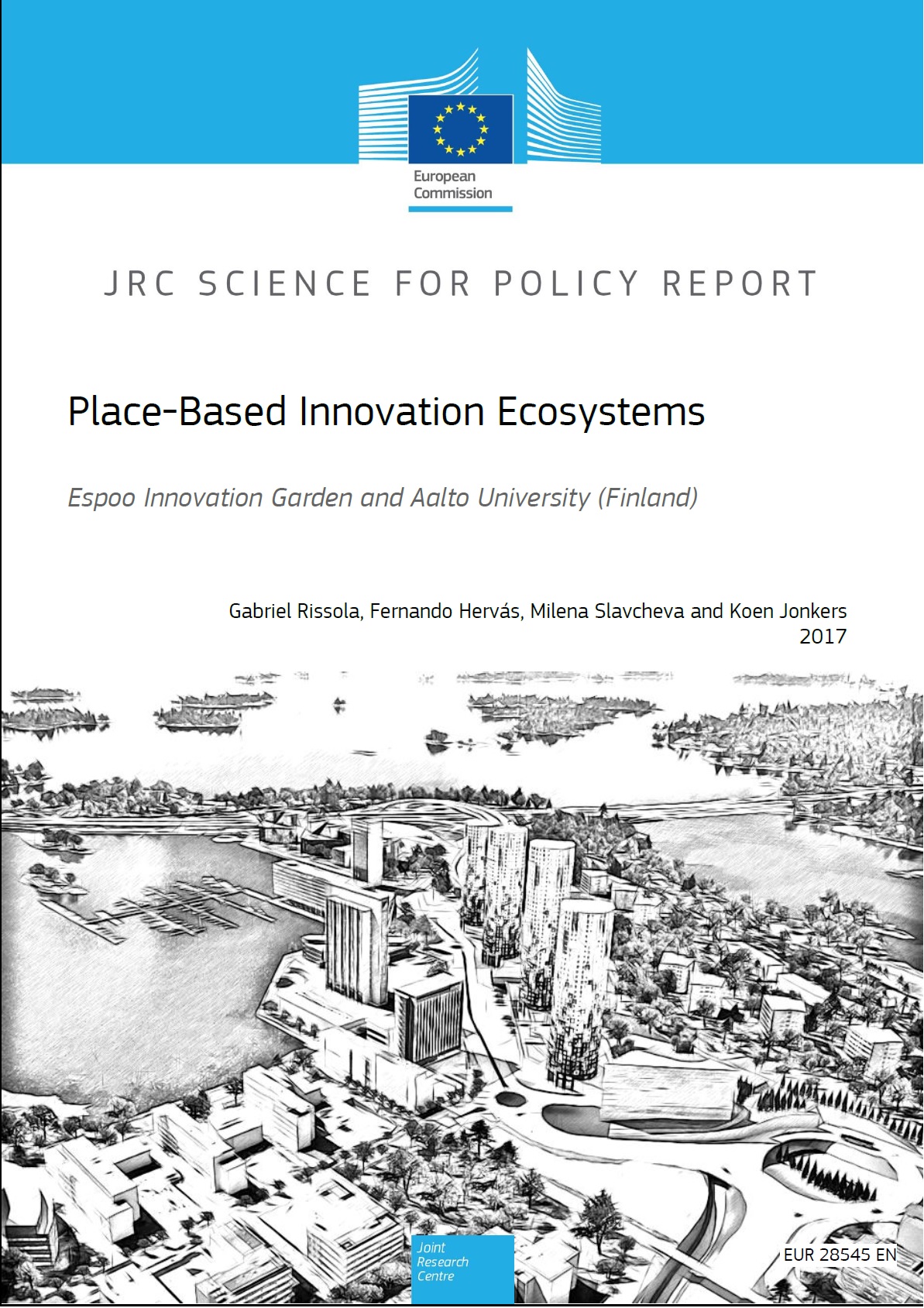Place-Based Innovation Ecosystems: Espoo Innovation Garden and Aalto University (Finland)
This research study was born from a fruitful collaboration between the Committee of the Regions (CoR) and DG Joint Research Centre of the European Commission (JRC) on promoting the importance of evidence-based policy development for regional and urban policy makers. In particular, the present case study aims to identify key success factors in the Espoo innovation ecosystem, with particular attention to the role of Aalto University as an example of an entrepreneurial university. It seeks to inform policies aimed at supporting the strengthening and emergence of existing or new place-based innovation ecosystems and entrepreneurial universities in other EU regions and cities.
Abstract
This case study aims to identify key success factors in Espoo innovation ecosystem, with particular attention to the role of Aalto University. In addition to highlighting key enabling factors and catalysers, it describes the main quadruple helix actors and explains their role in facilitating and driving the emergence of this innovation ecosystem. In particular it analyses how several of these actors – notably, but not only, Aalto University – have orchestrated this evolution.
Policy context
This report seeks to inform policy initiatives backing the continuous entrepreneurial discovery process advocated by smart specialisation strategies (S3) for territorial development. Another complementary aim is to inform national and regional policies targeted at promoting entrepreneurial universities, by improving the capacity of universities to evolve into strategic actors in their innovation ecosystems.
Key conclusions
The key success factors for the development of the Espoo innovation ecosystem can be generalised as follows: 1) the historically evolved concentration of highly skilled human capital and research infrastructure in the region, including the ups and downs of Nokia; 2) the vision, political commitment and collaborative culture of Helsinki-Uusimaa Regional Council and Espoo City; 3) the emergence of a strong orchestrating actor, i.e., Aalto University, which, on the basis of a shared strategic vision, stimulated the synergistic activities of the various actors; coupled with 4) the leadership, strategic and cross-disciplinary thinking of the university's management; 5) a local culture of innovation and entrepreneurship cultivated through the active support to bottom-up innovative activities in the university and the wider ecosystem; 6) a focus on the potential and capability of people to inform policies and programmes; 7) financial and policy support from the central government, including the innovation agency Tekes and private firms; 8) the successful involvement of serial entrepreneurs in financing and mentoring further start-up activities.
Main findings
The Espoo innovation ecosystem builds on a strong knowledge base. Decades of government and private investments in research and development intensive activities resulted in a high concentration of Human Scientific and Technological Capital and important research infrastructures.
The entrepreneurial spirit and participation of all actors (including students and citizens) is seen as crucial by leading organisations in the local context. It has been actively supported and facilitated by the university and the regional and city governments.
Co-creation with citizens/users is increasingly being cultivated through open innovation methodologies and open innovation spaces. Shared activities and large scale endeavours bring together all parties involved in an entrepreneurial discovery process of experimenting, taking responsible risks and learning in a collaborative way.
The broader Finnish institutional environment, experiencing a process towards deregulation, has conferred enough flexibility to innovation stakeholders to define and implement their own research and innovation agendas. Innovation brokers have at the same time been mandated to develop public-private partnership networks.
In the development of the Espoo innovation ecosystem there are (at least) three 'innovation process entrepreneurs'. The first and central actor is Aalto University and the university's leadership. The second one is the local government (Helsinki-Uusimaa Regional Council and Espoo City). The third one, rather as funding facilitator, is the national innovation funding agency Tekes.
Aalto University is a unique institution within a very distinctive innovation system. It was born out of the merger of three existing universities with a mandate to become the country's national 'innovation university'. As an endowment university, Aalto University has been able to build a new organisational model, activating at the same time a constellation of entrepreneurial initiatives and spaces. This has positioned Aalto University at the heart of the Espoo Innovation Garden as one of its key orchestrators.
Given the distinctive nature of the Espoo ecosystem and of the context in which it was born, it will not be straightforward for other regions or cities to engage in wholesale institutional learning from this case. Nonetheless, some key initiatives deployed in the Espoo Innovation Garden and the way Aalto University was facilitated to play its orchestrating role can inspire national and regional governments, as well as university administrations, in the development of their own policies.
Related and future JRC work
The present case study feeds into two complementary research lines launched by the JRC in 2017, one precisely on the topic of Place-based Innovation Ecosystems (seen under the lens of Territorial Development), and the other one on Entrepreneurial Universities, in which Espoo Innovation Garden and Aalto University are respectively taken as one of their cases.
Quick guide
This report starts by identifying a conceptual framework that can operationalise the study of concrete place-based innovation ecosystems. The study continues with 1) a presentation of the main local actors and pre-existing enabling factors in the Espoo innovation ecosystem, 2) progressively moves to the catalysers: notably the reforms that enabled the emergence of Aalto University, and 3) finally analyses the interaction between the different actors (public, private, higher education and citizens) that make up the ecosystem and the way these interactions are orchestrated.
Series
Place-based innovation ecosystems
